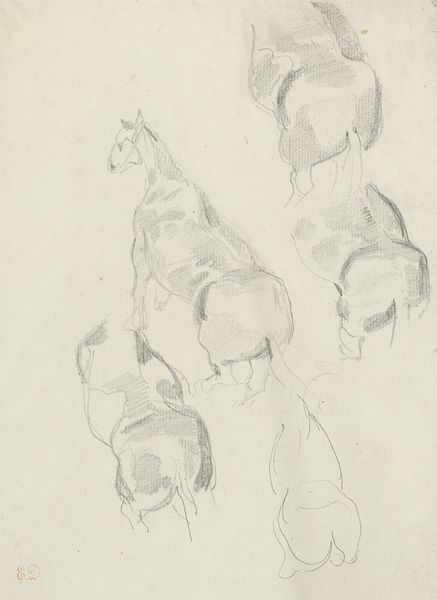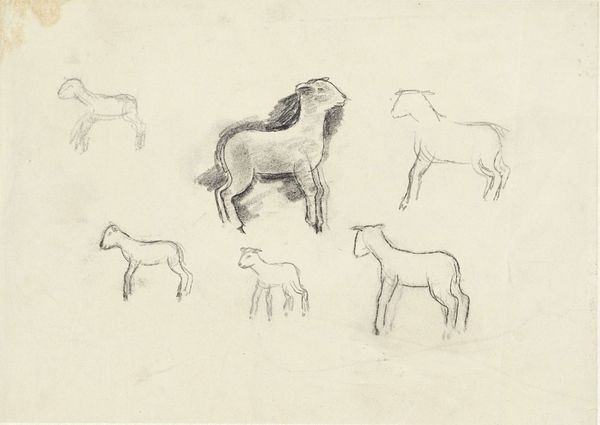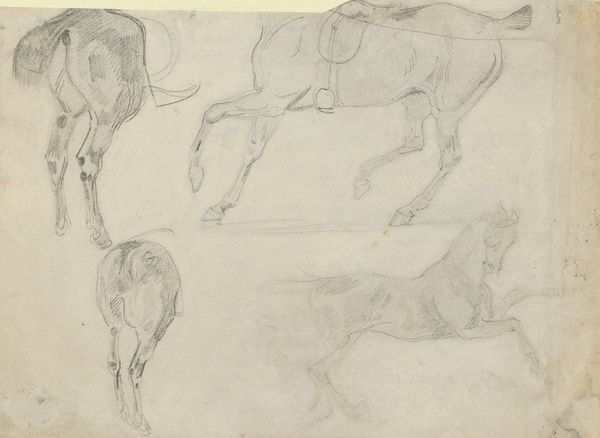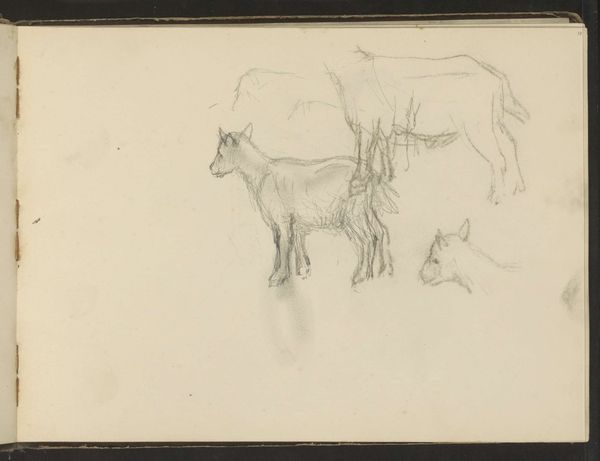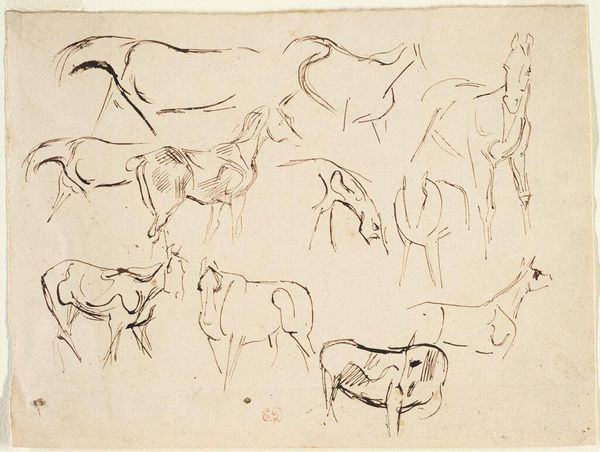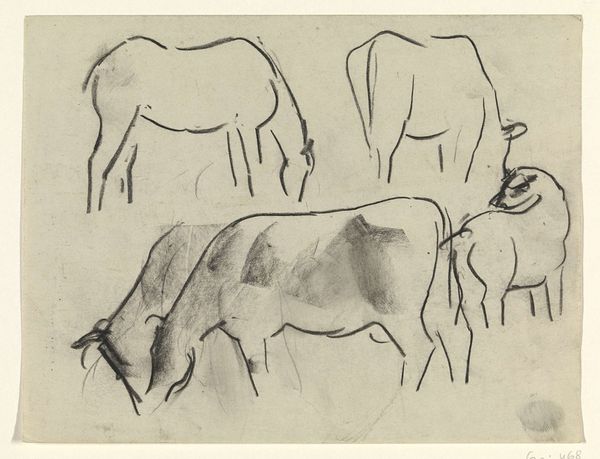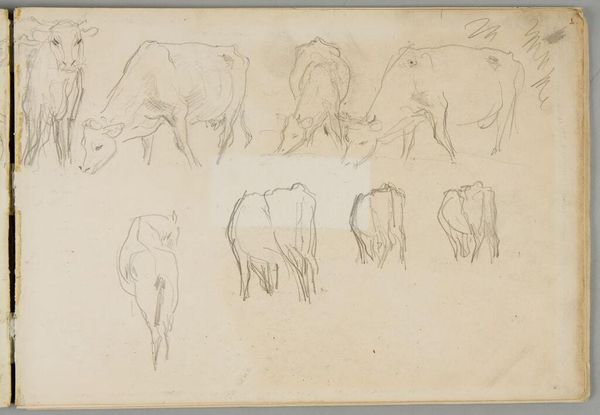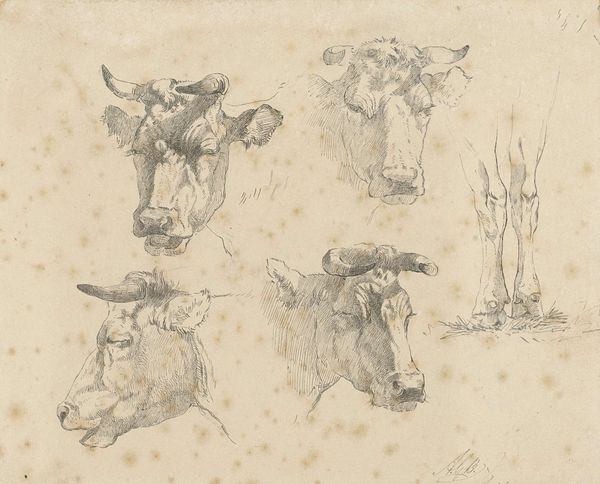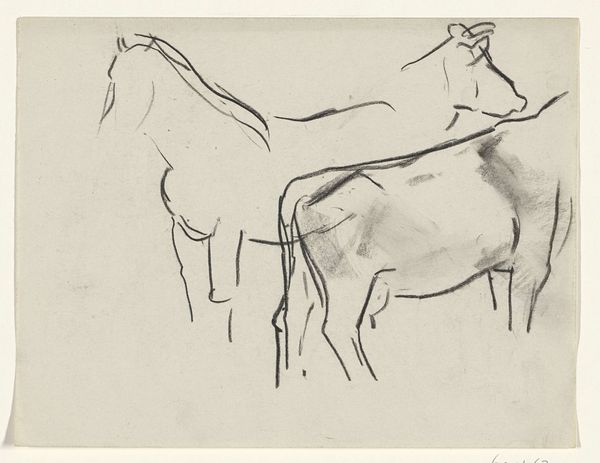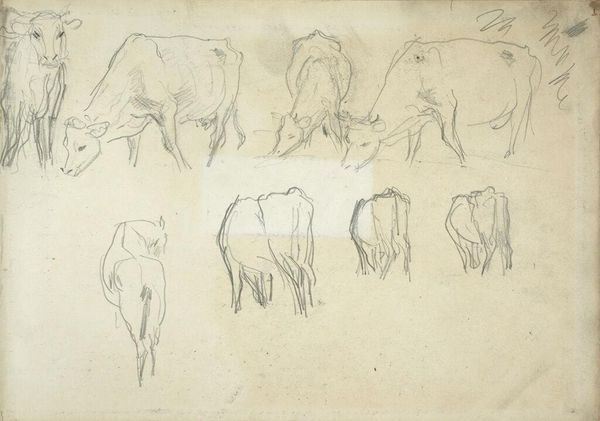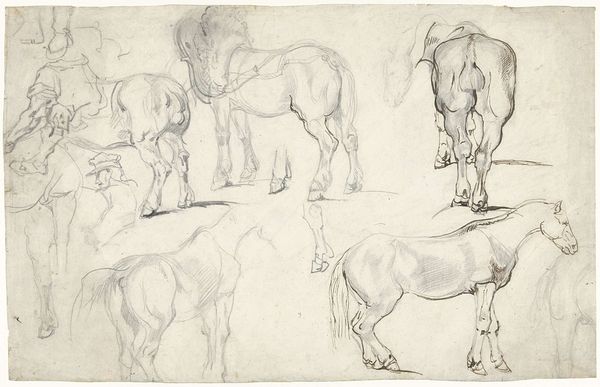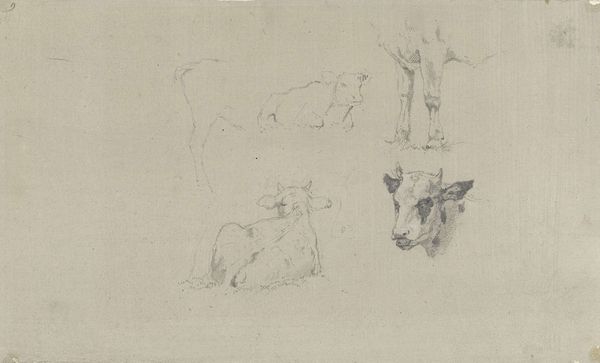
drawing, pencil
#
drawing
#
amateur sketch
#
light pencil work
#
thin stroke sketch
#
pencil sketch
#
sketched
#
incomplete sketchy
#
landscape
#
study drawing
#
figuration
#
form
#
detailed observational sketch
#
pencil
#
horse
#
rough sketch
#
realism
#
initial sketch
Dimensions: height 246 mm, width 382 mm
Copyright: Rijks Museum: Open Domain
Curator: This is "Two Studies of a Cow and Three of a Horse" by Gerard Bilders, made with pencil between 1848 and 1865. It’s currently held in the Rijksmuseum collection. Editor: There's a tentative, almost fleeting quality to these sketches. They capture the essence of the animals with such delicate, light pencil strokes. It's more about suggestion than precise depiction, isn't it? Curator: Absolutely. Bilders was deeply engaged with the Realist movement, seeking truth in everyday subjects. These sketches weren't meant as finished pieces, but rather as studies – explorations of form and light to prepare for larger works, probably landscapes with farm animals. Remember that mid-19th century Dutch art valued a very naturalistic view of the landscape and the rural sphere as one deeply connected to the nation itself. Editor: And what symbols were traditionally associated with these animals? The cow evokes notions of abundance, nourishment and the maternal, whilst the horse always represents power, freedom, sometimes virility and untamed natural energy. Bilders would've known these connotations as a standard language, as well as a rural setting, wouldn't he? Curator: Undoubtedly. Animals are laden with symbolic weight in the history of art. These aren’t simply livestock; they represent aspects of the Dutch landscape ideal, which itself carried immense social and political weight during the 19th century, reflecting back to an idealised golden age. Artists had a significant part to play in propagating such ideas. Editor: Looking closely, there’s an interesting contrast in how Bilders treats each animal. The cows feel softer, almost more vulnerable. The horses have a palpable tension in their posture, which is striking even in these incomplete studies. It gives me the impression of the pastoral world as one where brute labor also resides, never truly picturesque, but close to ordinary toil. Curator: That contrast speaks volumes about the complex realities of rural life that the Realists tried to convey. He acknowledges this world in its full complexity. Editor: Yes, these animals aren’t just figures in a landscape, but potent cultural symbols and very tactile beings on the page as well. It enriches one's encounter to reflect on that. Curator: Precisely. The study is not an attempt to simply represent a reality, but a concentrated examination of core political and symbolic values.
Comments
No comments
Be the first to comment and join the conversation on the ultimate creative platform.

